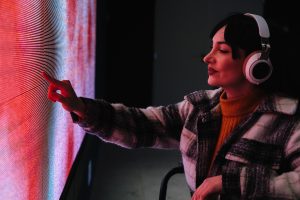Bringing people on the plant-forward journey
In the third and final part of her series on sustainable menus, Marie Simpson, Head of QHSE and Sustainability at Identity looks at shifting mindsets around plant-forward menus means meeting people where they are, and showing what’s possible, one plate at a time.
One thing I’ve learned over the years is that if you want to shift hearts and minds, you have to bring people with you. That’s especially true when it comes to food.
Suggest a plant-forward menu to some clients and you’ll be met with enthusiasm. Others? Blank stares, nervous laughter, or the classic: “But our CEO loves steak.” Fair enough. Food is personal. It’s wrapped up in culture, memory, even identity. And when you’re planning events – high pressure, high stakes (not steaks) – there’s comfort in the familiar. But here’s the thing: plant-forward menus don’t have to feel like a leap. They just need to feel like a step in the right direction.
Where do you start?
Start small. I’ve seen great success with bowl food lunches where half the dishes are plant-based and clearly labelled with a simple message about their lower carbon footprint. People try them – out of curiosity, or hunger, or both – and more often than not, come back for seconds. You’re not lecturing, you’re offering. That subtle shift can go a long way.
Another option is to integrate plant-forward options into one meal of a multi-day event. Make it a moment: a celebration of local produce, sustainable sourcing, or even a themed dining experience. Framing it positively, not as a compromise, but a highlight, can turn the unfamiliar into something genuinely exciting.
Crews matter too
Then there’s the crew. Anyone who’s worked in production knows the on-site catering scene is sacred ground. A hot breakfast, strong coffee, and a reliable lunch go a long way on a long day. So, it’s no surprise that a fully plant-based shift can be met with resistance, especially from those loyal to their bacon sandwich.
I’m not suggesting we take away the fry-up. But what if we added some genuinely satisfying alternatives that didn’t feel like an afterthought? I’ve seen crew menus transformed just by working with chefs to rethink a few core dishes. A warming dhal, a spicy bean stew with cornbread, or a smoky tofu wrap; filling, full of flavour, and good for energy levels. Again, it’s not about taking something away. It’s about broadening the offer.
Use visuals to inspire
And that’s the key with clients, too. Understand their sustainability ambitions (or lack of them), but also their audience, their brief, their brand. Show them a baseline CO2 figure for a standard menu, then a comparative figure for a plant-forward alternative. Use visuals, such as sample dishes, chef input, and presentation ideas, to help them see that this isn’t about serving salad and hoping for the best. It’s about a food experience that adds meaning to the event and value to their brand.
Change doesn’t happen in one menu. But if every event introduced a few better choices, gave people a reason to try something different, and sparked a new conversation, we’d be well on our way. Sometimes, it’s not about going all-in. It’s about opening the door.



